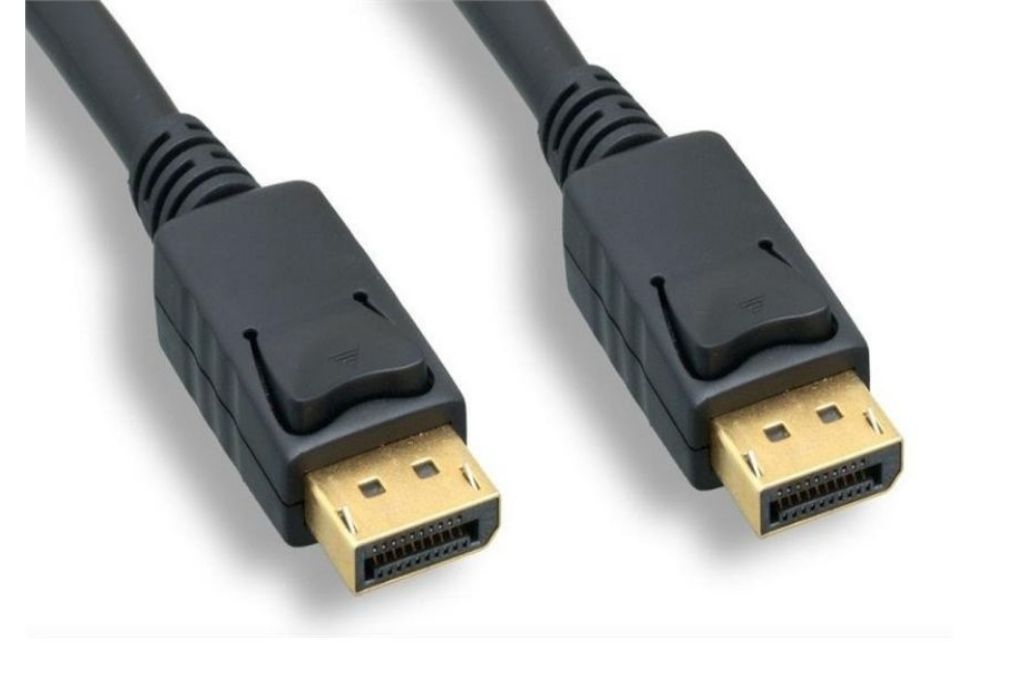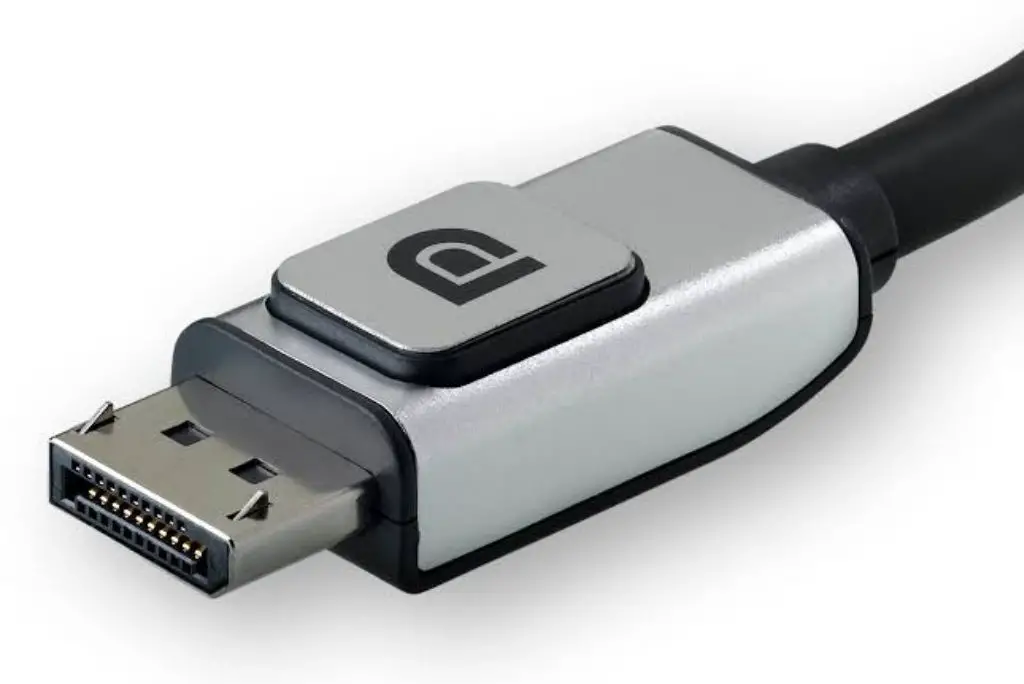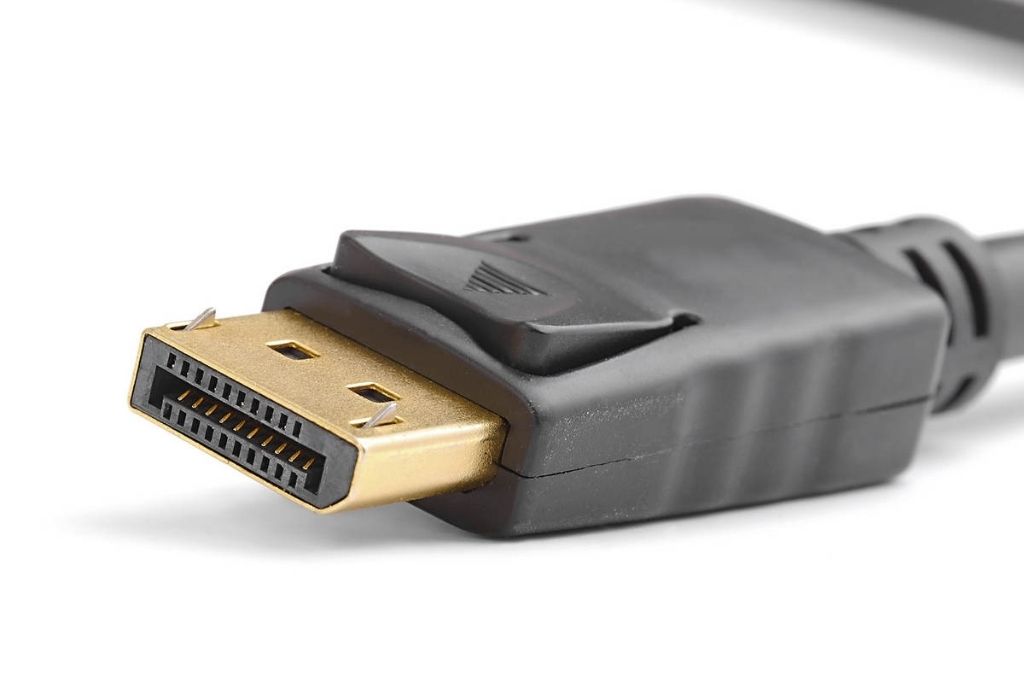DisplayPort is a modern-day video interface that supports more advanced features and technology than older VGA and DVI. Even the well-known video interface HDMI is getting tough competition.
With a higher data rate than the regular HDMI, the DisplayPort can handle many complicated data streams and remains the most popular for high-end gamers and streamers.
Are you stuck with the name DisplayPort 1.4? If yes, don’t worry; here, I’ll explain everything about this DisplayPort version and clear all your doubts.
So, What is DisplayPort 1.4?
DisplayPort 1.4 is the 5th version of DisplayPort technology introduced by VESA. This is one of the advanced versions of DisplayPort but not the latest. There was DisplayPort 1.3 before that version, but in 2016, VESA introduced DisplayPort 1.4 with some new upgrades.
It is a slightly modified version of DisplayPort 1.3 with a higher data rate and bandwidth. This DisplayPort can easily handle heavy loads and should be the best solution for your new gaming monitor, which supports a higher resolution and a higher refresh rate.
DisplayPort 1.2 is the most popular version as it is quite old and budget-friendly, whereas DisplayPort 1.4 is the current most selling DisplayPort version. You can also read the comparison between 1.2 and 1.4!
So if you’re stuck about this version’s features, upgrades, and more, then let’s read below.
Upgraded Features of DisplayPort 1.4
From the DisplayPort 1.2 and 1.3, there are impressive upgrades to this new DisplayPort 1.4; they are;
- Resolution & Refresh Rate: 8k at 60hz | 4k at 120hz
- Bandwidth: 32.4 Gbps
- Data Bit Rate: 25.92 Gbps
- DSC or Display Stream Compression: YES
- HDR or High-dynamic-range: YES
- 32 audio channels
- Color Resolution: 4:4:4, 4:2:2 & 4:2:0
- Supports resolution up to 1440p at 240 Hz refresh rate.
- It is also compatible with mini DisplayPort.
# Resolution & Refresh Rate
DisplayPort 1.3 supports a max 5k resolution. And with 5k resolution, it will provide a 60hz refresh rate, while if you run at 4k, it will provide 120 Hz with 24 bit/px RGB color.
Whereas DisplayPort 1.4 is the first version to provide 8k resolution. Running things at 8k will serve 60hz of refresh rate. But, if you run this at 4k resolution, you’ll get 120 Hz with 30-bit/px RGB color.
So there are extra resolution and color bit rate benefits.
On the other hand, if you compare 1.4 with 1.2, the 1.2 version runs 4k resolution at just a 60hz refresh rate. So 1.4 will serve a better 4k experience supporting the higher resolution.
Moreover, you can check a complete guide of resolutions and refresh rates of different DisplayPort versions from here; that I’ve published recently.
#Bandwidth
Bandwidth is a particular amount of data that a system can transfer within a specific time. So the higher bandwidth your DisplayPort supports, the more speed you’ll get.
In version 1.2, there is max bandwidth of 21.6 Gbps. In DisplayPort 1.4, you can get a max bandwidth of 32.4 Gbps.
Although in DisplayPort 1.3, you can get the same bandwidth as 1.4, we all know that the 1.3 version is not that popular. So the bandwidth is also great from other previous versions.
#DSC or Display Stream Compression
DSC, or Display Stream Compression, is a modern functionality that compresses the image and other elements’ sizes and makes the process faster. Thus, we get more resolution and refresh rates while gaming, streaming, and other works.
DisplayPort 1.4 is the first version of this technology that started supporting this new modern technology of DSC or Display Stream Compression. In the previous versions, there was no DSC.
So it is a great advantage for new-age gamers to run things smoothly and faster.
#HDR or High-dynamic-range video
HDR is a technology that captures the same image in different exposures, providing better image resolution.
DisplayPort 1.4 is capable of supporting this HDR or High-dynamic-range video functionality. So you’ll get better picture quality while performing games, streaming, or other works.
There was no HDR capability in the previous versions of DisplayPort.
Should You Buy DisplayPort 1.4?
The answer to this question is up to you. DisplayPort 1.4 is a great option for you if you play high-end games. If you want to enjoy 8k games at 60hz or 4k games at a higher refresh rate of 120hz, then you should go with it. Or if you are gearing up your gaming setup and spending a good budget, I’ll advise for DisplayPort 2.0 rather than 1.4.
But before buying, ensure all your components should support DisplayPort 1.4 version.
I mean, only buying a DisplayPort 1.4-supported computer [motherboard, GPU, CPU] will not give you the 1.4 features; your monitor should also support DisplayPort 1.4.
Lastly, you must have the DP 1.4 cable to connect the computer to the display or monitor.
DisplayPort 1.4 is one of the most selling interfaces nowadays. Most people have not shifted to the latest 2.0 due to the high price.
Is DisplayPort 1.4 better than HDMI & How?
If you compare DisplayPort 1.4 with HDMI or maybe the latest version of HDMI 2.1, then you can find so many similarities; they are;
Both interface support 8k resolution at 60hz and 4k resolution at 120hz. For higher brightness, contrast both have HDR or High-dynamic range. Although the bandwidth is quite high in HDMI 2.1, which is 48Gbps, in DisplayPort 1.4, it is 32.4 Gbps.
HDMI also give some extra features; still, DisplayPort is better because you have to admit we are comparing DP 1.4 with HDMI 2.1 [higher version]. If we compare DisplayPort 2.0 with HDMI 2.1, then DisplayPort will be far ahead of HDMI.
And DisplayPort gives you more smooth gaming experience than any other; moreover, for a multi-monitor setup, DisplayPort is essential. You can not connect the multi-monitor with HDMI.
Although both are good for gaming and other stuff, DisplayPort is specially made for monitors, gaming, streaming, and high-end works.
Does DisplayPort 1.4 Support 144Hz?
If you decrease the resolution, then the fresh rate will increase. So, you can manually set the refresh rate on your Monitor. Thus you can get a 144hz refresh rate with DisplayPort 1.4.
But you can not get 144hz with 8k and 4k resolution, as I’ve already mentioned the supported refresh rate for 8k and 4k resolutions.
If you decrease the resolution, then definitely the Refresh rate will increase. Here you can check how you can change a monitor’s refresh rate.
Conclusion
DisplayPort 1.4 is still worth buying even if DisplayPort 2.0 is still on the market. DisplayPort 1.4 is a very capable connection and can handle everything you may throw at it. It is also backward capable.
If you have older devices, it will also work with older versions of DisplayPorts, like DisplayPort 1.2 and display port 1.3. It will not disappoint you in terms of performance.
If you are a hardcore gamer and play many games on your PC and have a high refresh rate monitor, and you also want the support of multiple displays, then you need to go for DisplayPort cables.
If you are a casual user, someone who only plays some basic games and wants to watch some movies on a big screen with a higher resolution, then HDMI will be the best option.



